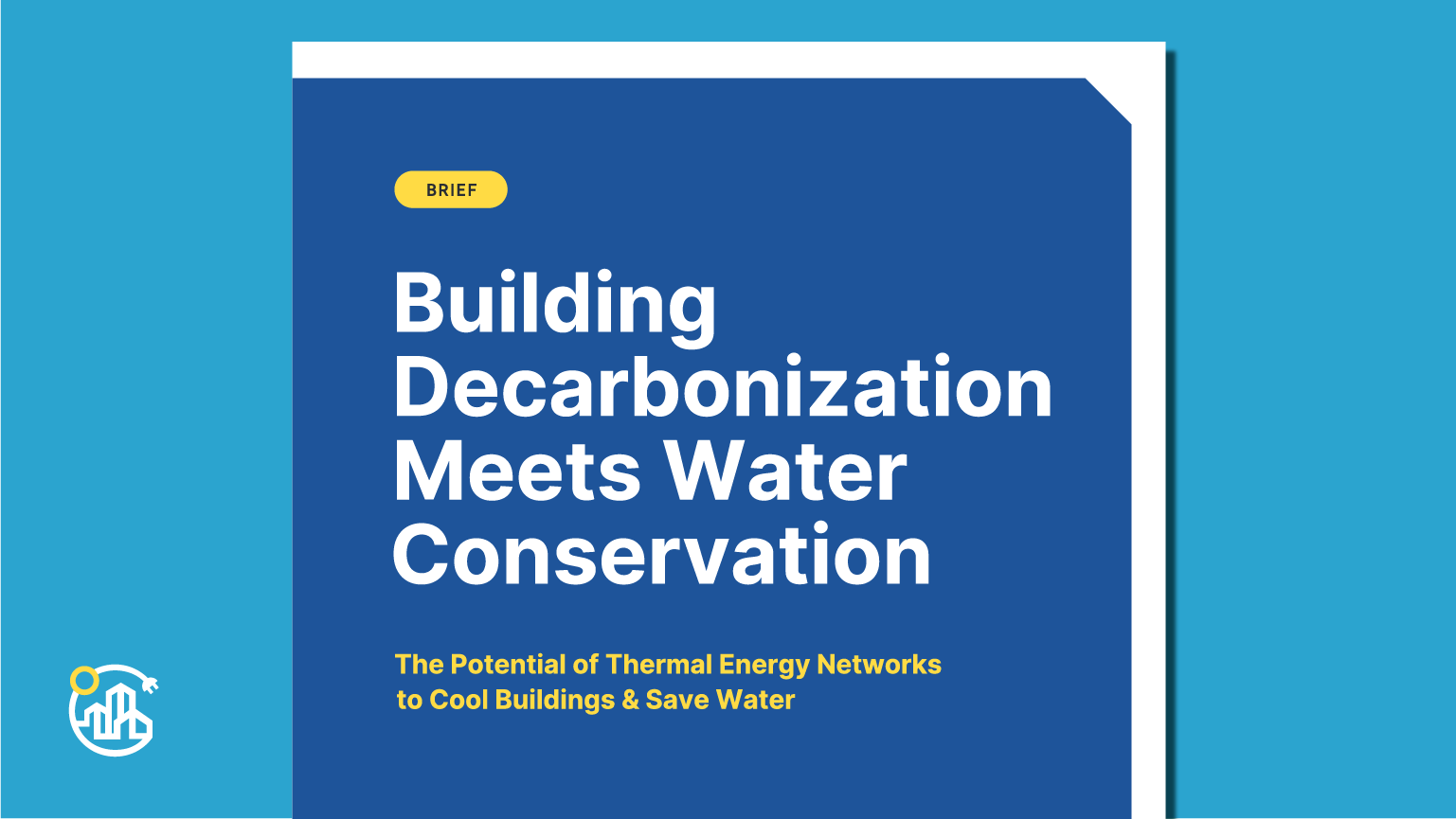
Building Decarbonization Meets Water Conservation
The Potential of Thermal Energy Networks to Cool Buildings & Save Water
BDC analyzed water-savings data from ten thermal energy networks (TENs) across the U.S. and Canada in this new brief, which showcases their significant water conservation potential. Building Decarbonization Meets Water Conservation: The Potential of Thermal Energy Networks to Cool Buildings & Save Water reveals that replacing conventional heating and evaporative cooling systems with thermal energy networks saves millions of gallons of water each year. Eight sites reported a collective annual savings of 337 million gallons—equivalent to the average annual water use of 3,000 U.S. households.
Keeping buildings and their occupants cool is a matter of health and safety, especially as heat waves have tripled in the last 60 years. But traditional evaporative cooling systems consume vast amounts of water; one estimate from Los Angeles County suggests this infrastructure consumes 2.5 billions of gallons a year. Thermal energy networks, which recycle and recirculate heat instead of releasing it through evaporation, offer a promising solution to the challenge of thirsty buildings.
The brief calls for more standardized data collection to help researchers, building owners, and engineers better understand and maximize water savings—especially as federal funding, state legislation, and new utility pilot projects drive the expansion of TENs and other building decarbonization strategies.
